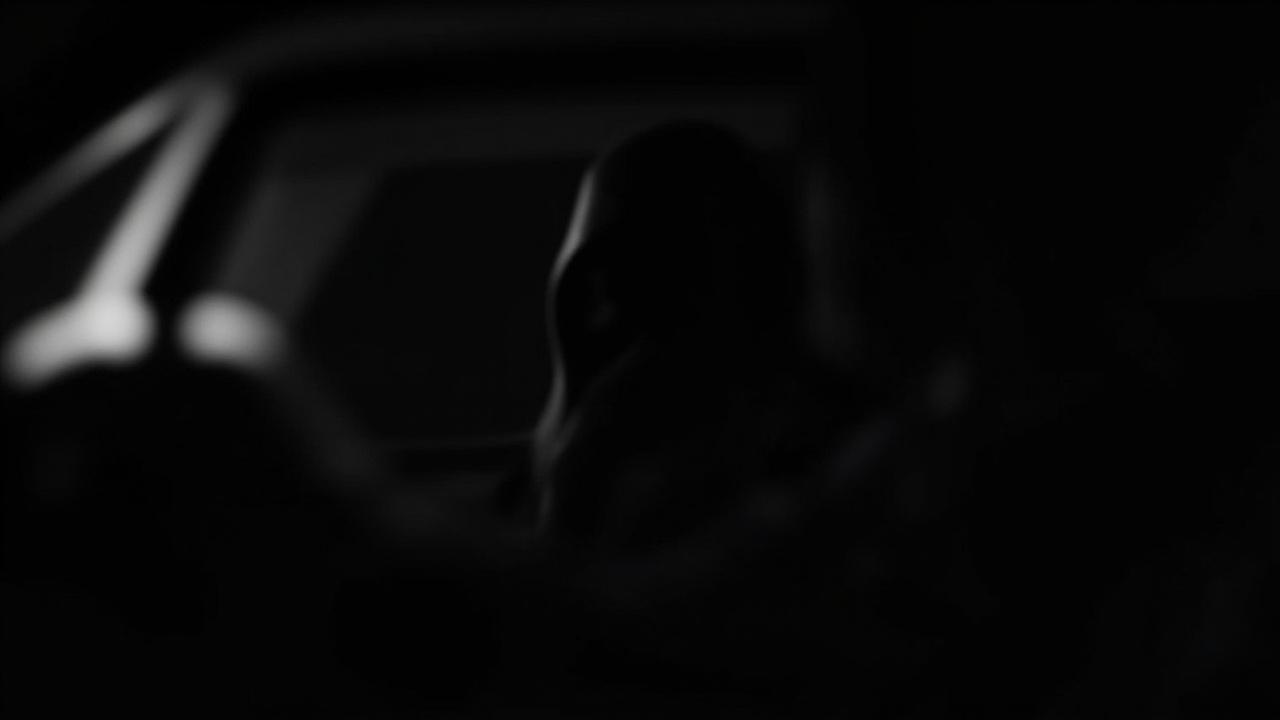Introduction
Being served with a domestic violence restraining order LA can feel like a punch to the gut. The initial shock and fear are often overwhelming, especially when you believe the allegations are false or exaggerated. This article is for those individuals in Los Angeles who find themselves in this challenging position – defending against a domestic violence restraining order. It aims to provide clarity and guidance through the legal process, emphasizing your rights and potential defense strategies.
It’s crucial to understand that being accused is not synonymous with being guilty. A domestic violence restraining order, while not a criminal conviction, carries significant consequences that can drastically alter your life. A permanent restraining order can impact your reputation within your community and professional life, potentially jeopardizing employment opportunities. Furthermore, it can affect child custody arrangements and even strip away your right to own firearms, depending on the specific details and findings of the order.
In California, the legal standard for issuing a restraining order is “preponderance of the evidence,” meaning it is more likely than not that the alleged abuse or threat occurred. This standard, while lower than “beyond a reasonable doubt” used in criminal cases, still requires the person seeking the restraining order to present evidence supporting their claims.
Because of the potentially life-altering ramifications of a DVRO, mounting a strong and well-prepared defense is paramount to protecting your rights and future.
What Is a Domestic Violence Restraining Order (DVRO) in Los Angeles? A Layman’s Guide
In Los Angeles, a domestic violence restraining order, often called a DVRO, is a court order designed to protect individuals from abuse or threats of abuse. It’s crucial to understand that these orders aren’t just for cases involving physical violence; they can also be issued in situations involving harassment, stalking, or credible threats.
To better understand DVROs, it’s important to understand the different types. An Emergency Protective Order (EPO) is usually issued by law enforcement at the scene of an alleged incident and provides immediate, short-term protection, typically lasting only a few days.
Next is the Temporary Restraining Order (TRO), which is granted by a judge after a person files a request with the court and is effective until a hearing can be held to determine whether a more permanent order is warranted. These types of orders can be in effect for only a few weeks.
Then comes the Permanent Restraining Order, which, despite the name, usually lasts for a period of one to five years and is issued after a court hearing where both sides have the opportunity to present evidence.
A *domestic violence restraining order la* will typically specify the geographical boundaries the restrained person must abide by. This often includes the protected person’s home, workplace, and children’s schools or daycare centers. It is vital to always remember that a restraining order is a civil order, not a criminal conviction. However, violating a DVRO can lead to criminal charges and serious penalties, including jail time.
Understanding the Initial TRO Hearing
The moment you’re served with a Temporary Restraining Order (TRO) in Los Angeles can feel overwhelming. It’s crucial to understand that this is just the *initial* step in the legal process, not a final judgment. The TRO is designed to provide immediate, short-term protection to the person seeking it.
You will likely be served with the TRO and a court date for a hearing on whether a more permanent order should be issued. The time between being served and that court date is critical, and how you use it can significantly impact the outcome of your case.
What Happens at the TRO Hearing?
The TRO hearing is your first opportunity to present your side of the story to the court. The judge will review the paperwork filed by the person seeking the restraining order, which usually includes a declaration detailing the alleged incidents of abuse, harassment, or threats. While it might seem daunting, it’s important to remember that the judge is there to assess whether the legal requirements for a restraining order have been met.
This often involves determining whether there is sufficient evidence to show that abuse occurred and that the person seeking the order has a reasonable fear for their safety. You’ll be given an opportunity to speak, but it’s essential to be prepared and organized. Bringing documents, photos, or other evidence that challenge the other party’s claims can be very helpful.
Why Preparation Is Paramount
The time between being served with the TRO and the hearing date is a period you must use wisely. This is when you should gather evidence to support your defense. This could include collecting text messages, emails, or social media posts that contradict the allegations against you. Finding witnesses who can attest to your character or provide an alibi for when the alleged incidents occurred is also crucial.
Even something as simple as documenting your daily routine or whereabouts can be beneficial. Moreover, start searching for an attorney experienced in handling a domestic violence restraining order la case. Remember, the more prepared you are, the better your chances of successfully challenging the restraining order. Unfortunately, at this stage of the case, you are not automatically allowed to cross examine the person who filed for the restraining order against you.
Building Your Defense
Here are several strategies you can employ when building a defense against a domestic violence restraining order in Los Angeles. It’s crucial to remember that each case is unique, and the best approach will depend on the specific facts and circumstances.
Challenging the Allegations and Questioning Credibility
One of the primary defense strategies is to directly challenge the allegations made against you. This involves presenting evidence that contradicts the claims of abuse, harassment, or threats. For example, if the accuser claims you were at a certain location at a specific time, you could provide an alibi, such as witness testimony or video surveillance, demonstrating that you were elsewhere.
Documentation of your relationship, such as emails or text messages that show a positive or neutral interaction leading up to the restraining order, can also be helpful. Furthermore, consider presenting character witnesses-individuals who can attest to your peaceful nature and lack of propensity for violence.
In addition to challenging the allegations directly, you can also explore inconsistencies in the accuser’s story or past behavior. For example, if the accuser has made conflicting statements or has a history of making false accusations, this can cast doubt on their credibility. It is important to approach this carefully and ethically, avoiding personal attacks or unsubstantiated claims.
The goal is to demonstrate that the accuser’s claims are unreliable or motivated by factors other than genuine fear for their safety. An experienced attorney specializing in *domestic violence restraining order LA* cases can help you navigate this delicate process.
Arguing Lack of Imminent Threat and Demonstrating False Allegations
A key element required for a restraining order to be issued is a reasonable fear of future harm. If you can demonstrate that there is no imminent threat, you may be able to defeat the restraining order.
This could involve showing that the alleged incident occurred a long time ago and there have been no subsequent incidents, or that the circumstances have changed in a way that eliminates the possibility of future harm. For example, if you have moved to a different state or have no contact with the accuser, this could weaken their claim of imminent threat.
In some cases, a restraining order may be sought for strategic advantage in a divorce or custody battle. If you have evidence that the restraining order is being used to gain an upper hand in these proceedings, it is essential to highlight this to the court.
This could involve showing a pattern of behavior where the accuser has made false allegations or has used the restraining order to limit your access to your children. Presenting evidence of such ulterior motives can be a powerful defense against a domestic violence restraining order.
Evidence Is Everything
Evidence is the cornerstone of any successful defense against a domestic violence restraining order. Without it, your case rests solely on your word against the accuser’s, which can be a difficult position to overcome. Meticulously gathering and presenting compelling evidence is crucial to casting doubt on the allegations and demonstrating that a restraining order is unwarranted.
Effective evidence gathering starts immediately. If served with a temporary restraining order, begin compiling any and all documentation that could support your version of events. This includes:
Remember, how you present your evidence is just as important as the evidence itself. You must understand the rules of evidence to ensure that your evidence is admissible in court. For example, hearsay – an out-of-court statement offered to prove the truth of the matter asserted – is generally inadmissible.
Understanding exceptions to the hearsay rule and other evidentiary standards is critical. This is one of the many reasons why seeking legal representation from an attorney specializing in a domestic violence restraining order la is so important. They can help you navigate these complex legal issues and present your evidence in the most effective way possible.
The Importance of Legal Representation
The landscape of California law surrounding domestic violence restraining orders can be incredibly complex and challenging to navigate alone. While individuals have the right to represent themselves, doing so can put them at a significant disadvantage. An attorney specializing in this area brings a wealth of knowledge, experience, and objectivity to the table, which can be crucial in building a strong defense and protecting your rights.
A lawyer experienced with a domestic violence restraining order la understands the nuances of the law, the local court procedures, and the strategies that are most effective in challenging these types of orders. They can provide invaluable legal advice, assess the strengths and weaknesses of your case, gather and present evidence in a compelling manner, and represent you in court with confidence and skill.
Furthermore, they can negotiate potential settlements with the other party, potentially avoiding a lengthy and stressful court battle.
The cost of legal representation can be a concern for many, but it’s important to consider the potential long-term consequences of a restraining order. These consequences can include limitations on employment opportunities, restrictions on firearm ownership, and negative impacts on child custody arrangements.

Weighing the cost of an attorney against the potential ramifications of a restraining order makes it clear that having qualified legal counsel is often a worthwhile investment. If affording a lawyer seems impossible, explore local legal aid societies in the LA area and request financial aid.
| Benefit of Legal Representation | Description |
|---|---|
| Expert Legal Advice | Attorneys specializing in domestic violence restraining orders possess in-depth knowledge of California law and can provide tailored guidance based on your specific situation. |
| Effective Case Strategy | Experienced lawyers can analyze the evidence, identify weaknesses in the accuser’s case, and develop a strong defense strategy to challenge the restraining order. |
| Courtroom Representation | An attorney can confidently represent you in court, present evidence persuasively, cross-examine witnesses, and argue on your behalf to protect your rights. |
| Negotiation Skills | Lawyers can negotiate with the other party’s attorney to reach a settlement, potentially avoiding a lengthy and costly trial. |
Navigating the Permanent Restraining Order Hearing
The permanent restraining order hearing represents a more in-depth legal proceeding compared to the initial TRO hearing. While the TRO hearing focuses on the immediate need for protection, the permanent hearing determines whether a restraining order will remain in place for an extended period, typically several years.
This stage allows for a more comprehensive presentation of evidence and a greater opportunity to challenge the petitioner’s claims. Understanding the nuances of this hearing is crucial for anyone defending against a domestic violence restraining order la.
A key difference lies in the potential for discovery. Unlike the TRO hearing, the permanent hearing may involve a discovery process, where each party can request documents and information from the other. This allows you to obtain evidence that supports your defense or contradicts the petitioner’s allegations.
For instance, you might request copies of text messages, emails, or other communications that paint a different picture of the relationship. The discovery process can be a valuable tool, but it also requires careful navigation and adherence to court rules.
Perhaps the most significant difference is the right to cross-examine the accuser and any other witnesses they present. This is your opportunity to directly challenge their testimony, probe for inconsistencies, and present alternative explanations.
Skilled cross-examination can be instrumental in undermining the accuser’s credibility and casting doubt on their claims of abuse or harassment. The judge will carefully weigh all the evidence presented, including witness testimony, documents, and any other relevant information, to determine whether the petitioner has met the burden of proof.
| Hearing Type | Key Features | Discovery Process | Cross-Examination |
|---|---|---|---|
| TRO Hearing | Focuses on immediate need for protection. | Typically no discovery. | Limited or no cross-examination. |
| Permanent Hearing | Determines long-term restraining order. | Discovery process may be available. | Right to cross-examine accuser and witnesses. |
Beyond the Courtroom
The issuance of a permanent restraining order extends far beyond the confines of the courtroom, potentially casting a long shadow over various aspects of one’s life. The implications can be profound and far-reaching, affecting employment opportunities, especially those requiring security clearances or involving work with vulnerable populations. Restrictions on firearm ownership are another significant consequence, as federal and state laws often prohibit individuals subject to a domestic violence restraining order la from possessing or purchasing firearms.
These restrictions can have a substantial impact on those who rely on firearms for their livelihood or self-defense. Furthermore, a restraining order can significantly influence child custody and visitation arrangements, potentially limiting or even terminating parental rights depending on the specific allegations and findings of the court.
It’s important to understand that a permanent restraining order is not necessarily permanent in the truest sense of the word. Circumstances change, and the law provides avenues for modifying or even terminating a restraining order if certain conditions are met.
The process typically involves filing a motion with the court, demonstrating a significant change in circumstances since the order was issued, and proving that there is no longer a credible threat of harm to the protected party. Examples of changed circumstances might include:
- Relocation of either party to a different state or region
- Completion of anger management or therapy programs by the restrained party
- Significant passage of time without any incidents or violations of the order
If you believe a restraining order was wrongly issued, or if there are grounds for its modification or termination, exploring the possibility of an appeal is another option. An appeal involves asking a higher court to review the lower court’s decision for errors of law or fact. The appeals process can be complex and time-sensitive, making it even more crucial to seek guidance from a qualified attorney.
Finally, it is critical to consider the interaction between restraining orders and any potential criminal accusations. A domestic violence restraining order la proceeding is civil, whereas any associated criminal accusations will certainly be criminal. Coordinating your defense strategies is critical for the best potential result.
Seeking Support
Facing allegations of domestic violence and the subsequent restraining order proceedings can be an incredibly isolating and stressful experience. It’s important to remember that you are not alone, and there are resources available to help you navigate this challenging time.
It’s vital to prioritize your mental well-being while simultaneously dealing with the legal complexities of your situation. Support groups and mental health professionals can provide a safe space to process your emotions, develop coping mechanisms, and gain valuable perspective.
Navigating the legal system, especially when dealing with a *domestic violence restraining order la*, can be overwhelming. Legal aid organizations often offer free or low-cost consultations to help you understand your rights and options. These organizations can provide guidance on the legal process, connect you with attorneys, and offer resources for self-representation if necessary. While they may not be able to provide full legal representation in every case, they can be a valuable source of information and support.
It’s important to carefully evaluate all resources and seek support that aligns with your specific needs and circumstances. This might include connecting with a therapist specializing in trauma or stress management, joining a support group for individuals navigating similar legal challenges, or seeking guidance from a trusted mentor or spiritual advisor. Remember that seeking help is a sign of strength, not weakness, and it’s crucial to prioritize your well-being during this difficult time.
Conclusion
Facing a domestic violence restraining order in Los Angeles is undoubtedly a challenging and stressful experience. However, it is crucial to remember that being accused does not equate to being guilty. As we’ve discussed, a restraining order can carry significant consequences, impacting your reputation, career, and even your parental rights. Therefore, understanding your rights and building a strong defense is paramount.
Throughout this article, we’ve outlined the various stages of the restraining order process, from the initial TRO hearing to the potential for a permanent order. We’ve emphasized the importance of gathering evidence, challenging allegations, and, most importantly, seeking qualified legal counsel. Remember, navigating the legal complexities of a *domestic violence restraining order LA* case can be overwhelming, and an experienced attorney can provide invaluable guidance and representation.
Ultimately, the goal is to ensure your voice is heard and your rights are protected. While the road ahead may seem daunting, remember that you are not alone. By taking proactive steps to build a solid defense and seeking the support you need, you can navigate this challenging situation and work towards a positive resolution. The information provided here is a starting point; engaging with legal professionals is the next, most vital step in safeguarding your future.
Frequently Asked Questions
What constitutes domestic violence in Los Angeles, justifying a restraining order?
In Los Angeles, domestic violence, which justifies a restraining order, involves abuse perpetrated against a cohabitant, spouse, former spouse, dating partner, or someone with whom you have a child. This abuse can take many forms, including physical harm or threats, sexual assault, stalking, harassment, or any behavior that disturbs the peace of the protected person.
The court considers the totality of the circumstances to determine if abuse has occurred.
How do I file for a domestic violence restraining order in Los Angeles?
To file for a domestic violence restraining order in Los Angeles, you must first obtain the necessary forms from the court clerk’s office or the court’s website. You will then complete these forms, detailing the abuse you’ve experienced and providing relevant information about the abuser.
The completed forms must be filed with the court, and arrangements will be made to serve the abuser with the filed documents.
What is the difference between a Temporary Restraining Order (TRO) and a Permanent Restraining Order in LA?
In Los Angeles, a Temporary Restraining Order (TRO) is a short-term order issued by a judge to protect someone from immediate harm. It goes into effect immediately upon being signed by the judge and lasts for a limited time, typically around three weeks.
A Permanent Restraining Order, conversely, is granted after a court hearing where both parties have the opportunity to present evidence, and can last for up to five years.
What evidence is needed to obtain a domestic violence restraining order in Los Angeles?
To obtain a domestic violence restraining order in Los Angeles, you need to provide credible evidence of abuse. This evidence can include photographs of injuries, medical records, police reports, text messages, emails, voicemails, witness testimonies, or personal declarations detailing the incidents of abuse. The more comprehensive and convincing the evidence, the stronger your case will be in court.
How long does a Temporary Restraining Order (TRO) last in LA, and what happens after?
In Los Angeles, a Temporary Restraining Order (TRO) typically lasts for about 21 to 25 days, or until the date of the hearing for a more permanent restraining order. After the TRO expires, a hearing is held where both the alleged abuser and the protected party can present their case.
The judge then decides whether to issue a permanent restraining order, which can last for up to five years.









